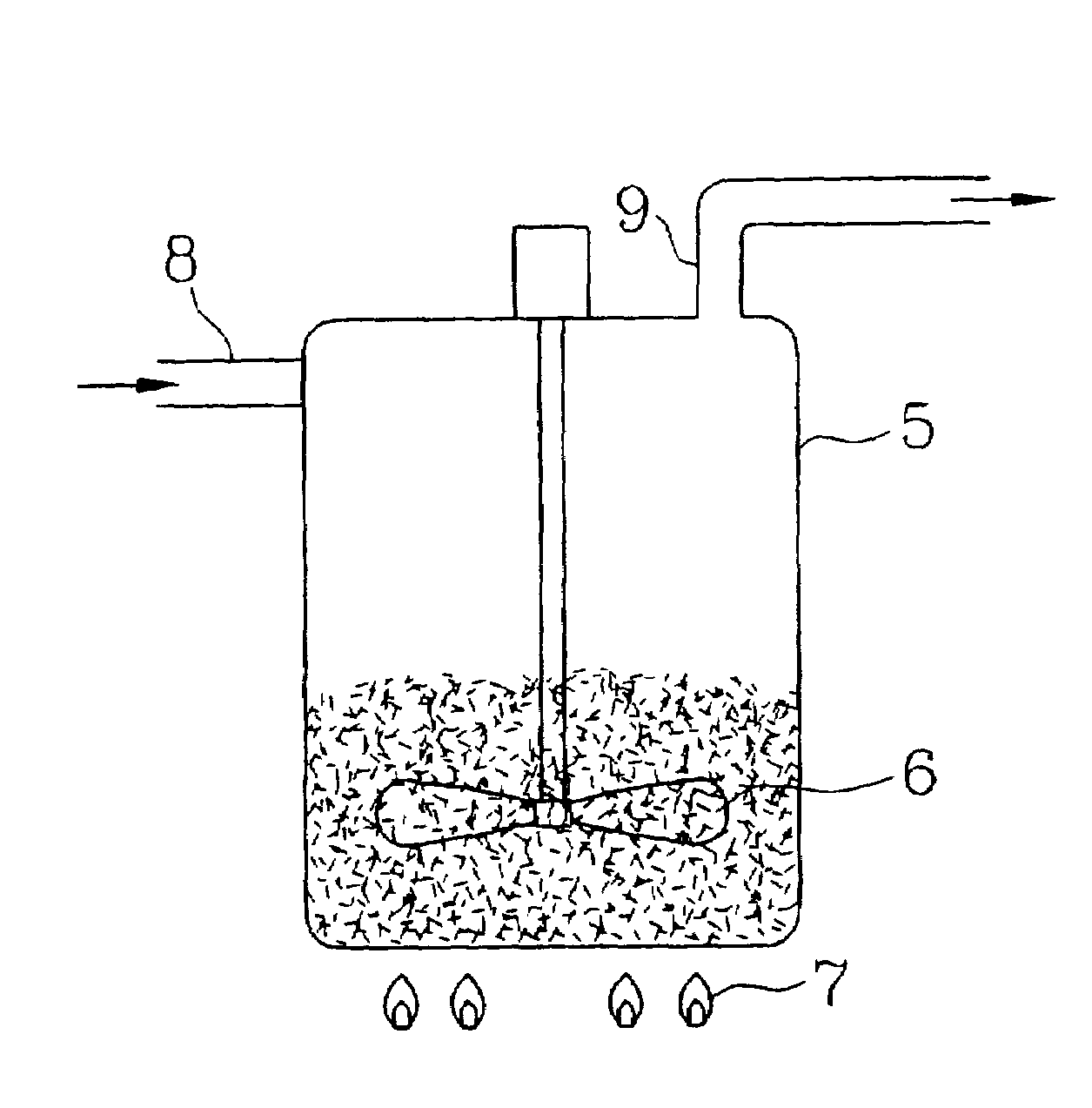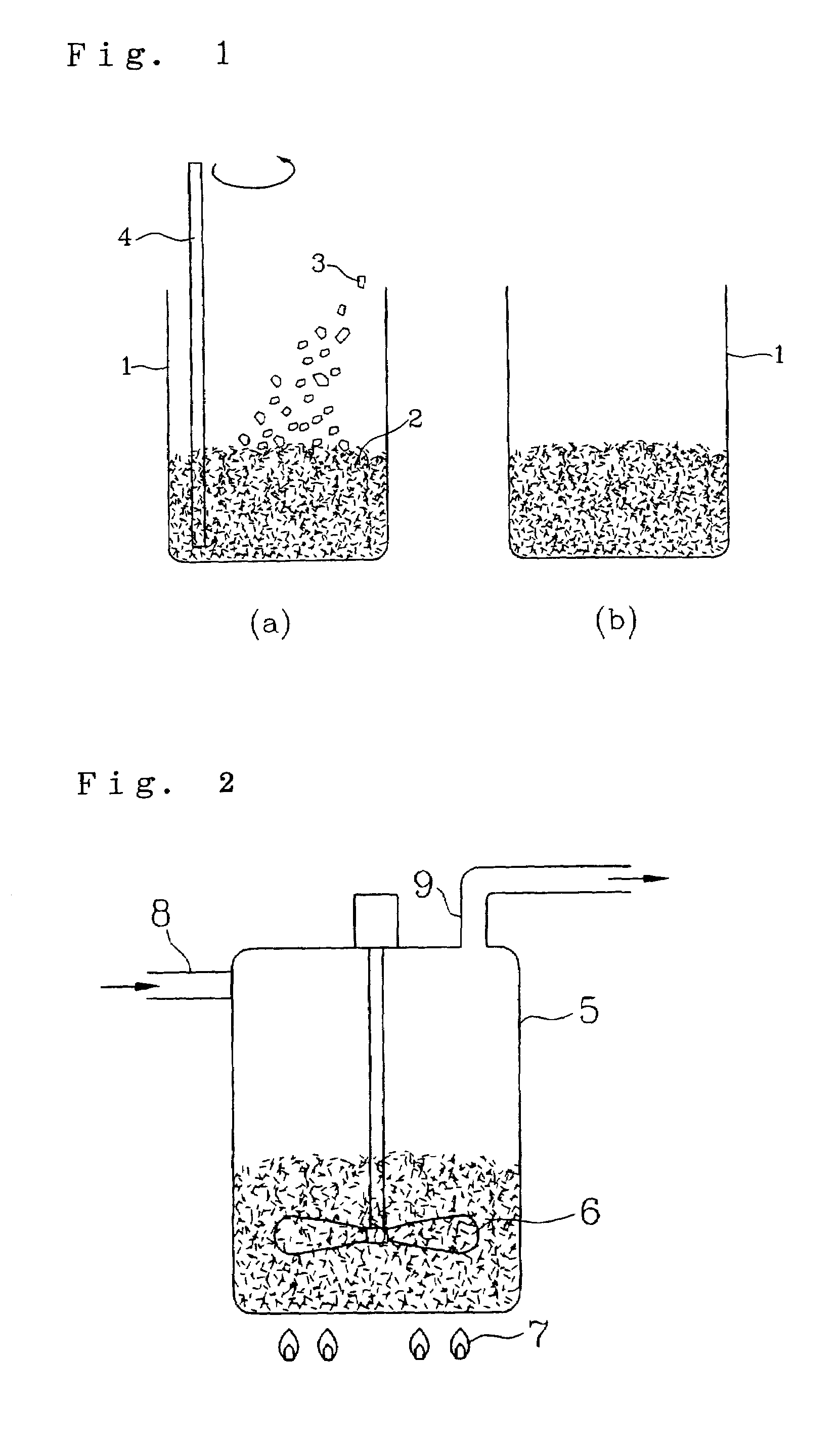Method for decomposing plastic
a plastic and decomposing technology, applied in the direction of sustainable manufacturing/processing, nuclear engineering, petrochemical industry, etc., can solve the problems of environmental pollution, difficult to perform plastic burning recently, and inability to generate toxic gas
- Summary
- Abstract
- Description
- Claims
- Application Information
AI Technical Summary
Benefits of technology
Problems solved by technology
Method used
Image
Examples
example
[0049]Next, the present invention will be explained in more details with referring to the manners of practical embodiment shown in the drawings.
[0050]FIG. 1 shows an experiment carried out by the inventor in which cement 2 is placed in a beaker 1 and heated to 250° C., followed by applying 20 to 30 pieces of polyethylene foam 3 (foamed four to six times, brown, about 5 mm cubic), and agitating with an agitator 4. All the plastic pieces disappeared quite shortly (in about one minute). Cement was weighed to be found as the same as before applying the plastic pieces. From this, it is appreciated that all of the placed plastic pieces was gasified and scattered into the air.
[0051]FIG. 1(a) shows placing the plastic pieces in the beaker, and FIG. 1(b) the state the plastic already gasified and scattered into the air, i.e., corresponding to an initial state of the device.
[0052]FIG. 2 shows an example of the method according to the present invention being used wherein cement 2 is filled in ...
PUM
| Property | Measurement | Unit |
|---|---|---|
| diameter | aaaaa | aaaaa |
| temperatures | aaaaa | aaaaa |
| temperatures | aaaaa | aaaaa |
Abstract
Description
Claims
Application Information
 Login to View More
Login to View More - R&D
- Intellectual Property
- Life Sciences
- Materials
- Tech Scout
- Unparalleled Data Quality
- Higher Quality Content
- 60% Fewer Hallucinations
Browse by: Latest US Patents, China's latest patents, Technical Efficacy Thesaurus, Application Domain, Technology Topic, Popular Technical Reports.
© 2025 PatSnap. All rights reserved.Legal|Privacy policy|Modern Slavery Act Transparency Statement|Sitemap|About US| Contact US: help@patsnap.com


